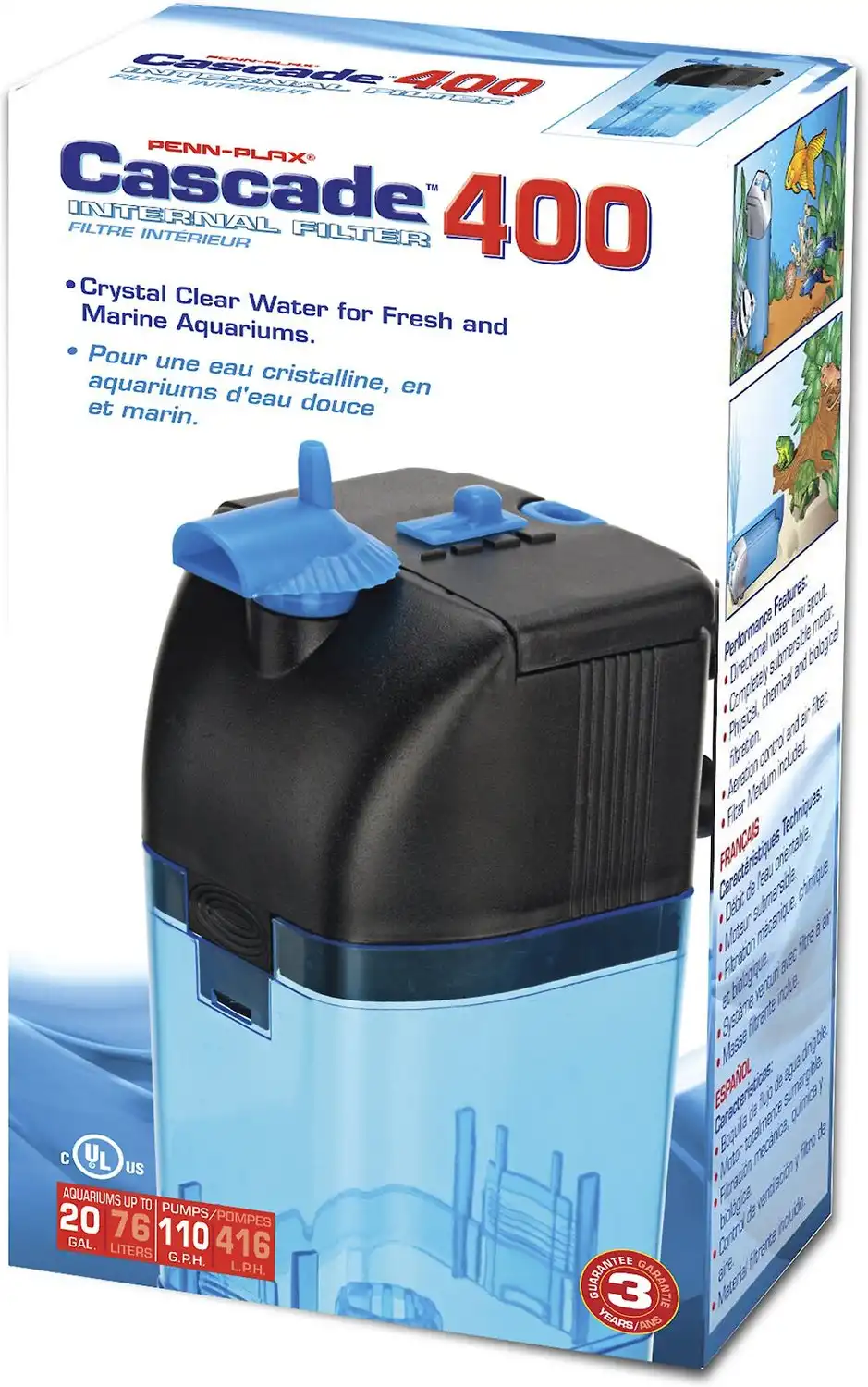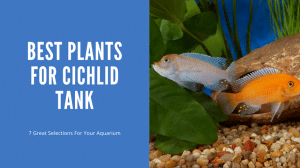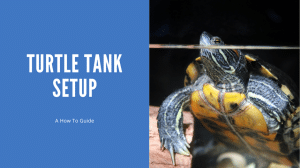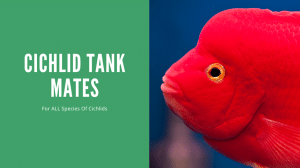Thank you for visiting! By the way… any links on this page that lead to products on Amazon and other stores/partners are affiliate links Aquarium Store Depot earns a commission if you make a purchase.
Are you intrigued by this unique land-water creature that is dazzlingly colored? Then, let us explore the world of Rainbow Crabs! Whether it’s about their natural environment or how to take care of them in a captivated setting, here we give all information regarding the species. Find out more about their habitat, nutritional needs and social behavior along with helpful advice for keeping your pet healthy. So why not join on our exciting quest into understanding these amazing crustaceans better?
The blog post discusses every detail related to taking care of Rainbow Crabs starting from its vibrant features right down to what kind of housing they need. You will also gain an insight into different aspects like diet habits, lifestyle practices as well as ways ensuring maximum health benefit when raising these fascinating beings indoors .
Key Takeaways
- Rainbow crabs do best in a 50% water 50% land setup
- Provide them with proper care and housing, including suitable substrate & hiding spots
- Provide them a balanced diet with fresh fruits/veggies, insects & protein-rich foods.
- Molting is an important process. They need a good place to have during this time and will eat their molts
Species Overview
| Scientific Name | Cardisoma armatum |
| Common Names | Rainbow Crab, Patriot Crab, African Rainbow Crab, African Freshwater Crab, Nigerian Moon Crab, Tricolor Crab, Soapdish Crabs, Indigo Crab, Burrowing Land Crabs, Tricolour crabs |
| Family | Sesarmidae |
| Origin | Southeast Asia (specifically Indonesia), West Coast of Africa |
| Diet | Omnivore |
| Care Level | Intermediate |
| Activity | Mostly active during the night (nocturnal) |
| Life Span | 2-3 years |
| Temperament | Generally peaceful, but males can be territorial towards each other |
| Tank Level | Semi terrestrial, with access to both land and water areas in the tank |
| Minimum Tank Size | 5 gallons (18 liters) for a single crab, larger if keeping a group |
| Temperature Range | 75-82°F (24-28°C) |
| Water Hardness | 0-10 dKH |
| pH Range | 6.0-7.5 |
| Filtration/Water Flow | Slow to Moderate |
| Water Type | Freshwater Tanks |
| Breeding | Egg Carrier |
| Difficulty to Breed | Moderate |
| Compatibility | Compatible with like-minded and like-sized fish species and inverts |
| OK, for Planted Tanks? | With Caution |
Understanding Them
Rainbow crabs, known to some as land crabs, are semi-aquatic crustaceans native to West Africa1. Their alluring combination of aggressive behavior and vibrant colors set them apart from other crab species such as the patriot crab, males displaying brighter tints than females. Such an attractive form is referred to by their scientific name Cardisoma armatum – which can be translated literally into “armored with claws”!
Let’s have a closer look at these remarkable creatures. Discussing where they come from, what makes them so unique in terms of physicality (size & color), and how long we get on average for lucky enough owners or observers – rainbow crab life expectancy.
Origin And Natural Habitat
Rainbow crabs, also known as African Rainbow Crab or Patriot Crab, are native to the coastal regions of West Africa. Showcasing stunning colors on their bodies with males featuring bright blue carapace and orange red legs along with white claws while females flaunt pale blue-grey hues combined with pale orange legs coupled by white pincers differentiates them from other animals in their natural habitat.
These burrowing crustaceans thrive best near fresh/saltwater sources where they can dig deep into moist sand and vegetation for an idealistic cool shelter setting within its burrows -an extremely important part of taking care of these crabs in captivity, which we will explore ahead!
Appearance

Rainbow crabs are known for their dazzling colors, especially the males which often boast much brighter hues than females. These could include vivid reds with orange-red legs, yellows and oranges as well as softer blues and greens, while some species even feature a purple blue carapace! After they hatch in watery habitats baby rainbow crabs stay there until growing larger when they become more land based creatures. As these crab age or molt Their beauty may fade yet it is still easy to distinguish them from other types of crustaceans due to all those distinctive coloring patterns that make up this unusual creature’s appearance.
Average Size
Rainbow crabs can reach up to 8 inches in size thought are usually purchased at a smaller size and seen in aquariums around 3-4 inches. To make sure they stay healthy, it is important for them to have sufficient space and hideouts when held together with other rainbow crabs, something we will be discussing more thoroughly later on in the section about housing conditions.
Lifespan
Rainbow crabs usually survive for around 8 years in their natural habitat, but when kept as pets they have an average life expectancy of 3-5 years. Maintaining the health of these vibrant crustaceans involves providing them with proper care to guarantee a suitable living environment – diet, stress levels, and surroundings all playing important roles. In order to successfully keep rainbow crabs captive it is necessary to create an optimal home setting and provide adequate support on a consistent basis.
Proper Housing For Rainbow Crabs
Taking care of rainbow crabs is a key part when it comes to creating the perfect living conditions for these semi-terrestrial creatures. To do so, you will need to create a paludarium that has both aquatic and terrestrial aspects within its environment in order for them to live properly.
For the aquarium size, consider a 3 or 4 foot long aquarium, with 4 feet being the preferred. Plan on purchasing a cover for the tank as these crabs are known for being escape artists. The tank should also be placed in a quiet room as they do not like to be placed in busy areas like a living room.
Paludarium Setup
For rainbow crabs, maintaining a paludarium with an even aquatic-terrestrial division is essential for their health. This means providing freshwater or brackish water (with a suggested saliny of 1.005 – 1.015). Provide a humid environment with temperatures ranging from 75°F up to 85°F.
As far as crab hiding spots go, making sure you provide suitable options allows them more comfort within their living environment. This could include some type of foliage like live plants or other items that will serve similar purposes without risking any damage caused by the crab walking over them or through their burrowing habits.
Your land and water sections of the paludarium should be appropriately split. Ideally, you want half the tank land and the other half water with both sections separated horizontally. The water section must be filtered. You can use a canister or an internal filter to filter out the water in that section.
This 3 stage internal filter offers one of the largest media capacities for an internal filter
Substrate And Hiding Spots
Rainbow crabs must have a deep substrate, such as sand or cocofiber, to create and live in their burrows. The land portion of the paludarium should be at minimum 10 cm (4 inches) in depth for them to feel safe while making their homes. We would recommend much deeper so they bury themselves in the sand. This behavior is seen more often when the crab molts. Hiding places like driftwood, rocks, and vegetation are important components of imitating nature when creating an ideal habitat for these crustaceans.
Diet And Feeding
Rainbow crabs are omnivorous animals that need a well-balanced diet to stay healthy and content. To provide this, their meals should consist of fruits, vegetables, insects or other sources of protein. For optimal nutrition it is vital for the owners to manage leftover food accordingly in order to ensure these crustaceans get everything they require and that food doesn’t rot in the tank.
You should also watch for uneaten food reaching the water section of the tank. Make sure to clean out the water of the tank at least once a month and more often than that if you are dealing with ammonia or nitrite issues.
Dietary Needs And Types Of Food
Rainbow crabs need a varied diet of meats, fruits, and vegetables to thrive. This should consist of the following:
| Fruits | Vegetables | Protein |
| Mangos | Kale | Mealworms |
| Papayas | Collard Greens | Shrimp |
| Apples | Squash | Krill |
| Watermelon | Bloodworms | |
| Grapes |
You can also use pet food, such as Hikari Crab Cuisine, as a staple to feed in between the suggested foods. It is also important to include calcium supplements for the formation of their shells. For these reasons, giving crab balanced meals is essential for its growth development to avoid potential problems.
Behavior And Social Interaction
Rainbow crabs are a solitary species. If you are planning to keep one, plan on only keeping this species in the tank. While it is possible to keep another rainbow crab, they are aggressive with each other and require a larger tank.
There are no fish tank mates you can include in the water section of the tank. Your crab will eventually either eat or kill them over time. They are aggressive and territorial species once established.
Molting Process
Rainbow crabs require molting to not only grow their protective shells but for development as well. This process involves the crab taking in water until its carapace has reached a bursting point, at which time it will push out of its shell. It is critical that these creatures are left undisturbed during this delicate period so they can complete it properly. Do not attempt to handle or feed them while molting (they won’t eat anyway during this time), and let them eat up what was inside the old shell instead – making sure calcium levels remain balanced throughout this transition stage is paramount for rainbow crabs’ health. In order to breed these fascinating crustaceans successfully
Health And Potential Diseases
Maintaining a healthy environment and diet is essential for preserving the health of rainbow crabs, as shell rot, fungal infections, or parasitic infestations can easily take hold in poor conditions. Appropriate attention to their living arrangements should be taken to ensure they remain strong and lively.
Cleaning out the tank regularly helps battle these diseases. Keep a well balanced diet will also keep many diseases away. Don’t hesitate seeking professional help from a vet or experienced crab keeper if things do go south.
Breeding Challenges And Considerations
Breeding rainbow crabs can be a tricky undertaking due to their particular environmental demands, belligerent mating behavior and reliance on lunar cycles and tides. For the majority of hobbyists, the intricate courtship rituals, as well as how these crustaceans mate together with specific natural factors, make it near impossible to raise them in captivity.
For those interested in the breeding process. The crabs have a mating ritual where the female will store sperm in her body. When the eggs are ready to be released, the sperm will be released to flow over the eggs and fertilize them. The female Rainbow Crab journeys to the ocean, releasing her eggs into shallow waters. These eggs will hatch, and the rainbow crab larvae will be in salt water. A crab can have as many as 100 offspring at one time, though the average is usually 10 to 20.
For those who are interested in having one or more of these species at home, it is suggested that they buy from established vendors instead of trying to breed them since that way assures healthier specimens without all difficulty related to breeding.
Other Species To Check Out
Not sure if this crab is for you? Check out our other crab guides below:
Frequently Asked Questions
How old do rainbow crabs get?
Rainbow crabs have an average lifespan of 5 to 8 years when kept in captivity. They grow up to a carapace size of 10 cm (4 inches). To maximize their lifespan, place them in a sizable tank and provide them with a balanced diet.
Are rainbow crabs pets?
Rainbow crabs can be excellent pets, offering captivating views both in and out of the water. They make great companions to watch over a long time! They are an excellent sole species to keep.
What is the ideal temperature and humidity for rainbow crabs?
To promote the health of your rainbow crabs, temperature should be kept between 75° to 85° Fahrenheit with a humidity range from 75-85%. Water should be kept clean with the use of an aquarium filter, with an internal filter being the easiest filter to implement.
How often do rainbow crabs molt?
Rainbow crabs molt in a cycle, dependent upon their maturity. This timeframe lasts anywhere from several weeks to multiple months. During this time, the land crab will not eat, but will eventually eat their molt when they are ready.
Can rainbow crabs be kept with other crustaceans?
When it comes to rainbow crabs, keeping them together is not a good idea as they can have conflicts over authority. It’s best to separate these from other types of crustaceans too. These little creatures should be kept away from each other so that there won’t be any hostility between them and the others.
Closing Thoughts
This blog post has focused on giving us a better comprehension of rainbow crabs – their mesmerizing colors, semi-terrestrial life style and the difficulties that come along with keeping them in captivity. A proper habitat as well as supplying adequate nourishment are important steps when caring for these crab species so that you can ensure they stay healthy.
How has your experience been keeping these animals? Let us know in the comments below. Until next time, fellow crab keepers!
- About the Author
- Latest Posts
I’m thrilled that you found Aquarium Store Depot! Here you’ll find information on fish, aquariums, and all things aquatics related. I’m a hobbyist (being doing this since I was 11) and here to help other hobbyists thrive with their aquariums! I adhere to a high quality Editorial Process and Review products with real life field usage and practical analysis.






